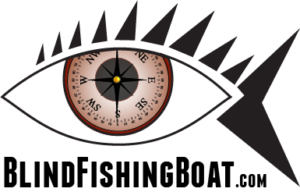Beeping / Flashing / Rattling Fishing Bobbers?
Question:
I have a friend that loves to fish from the Dock. He can’t see when the bobber goes down and misses a lot of “hits”.
Is there another bobber or other equipment that will return him to dock fishing?
You have some great stuff here. I never considered the fishing aspect of Life, even though I work with 175 blind/visually impaired folks and am visually impaired myself. My in-laws still won’t let me drive the boat.
Steve VanderPoel
Dallas Tx
http://DallasLighthouse.org
Answer:
You have raised a question that has troubled fishers from the earliest days, how to create a bobber that can convey information to the fisher but not to the fish. A quick search on the internet shows that more than a few claim to answer this quest, but none have come out with the ultimate bobber that will trigger an alarm when their’s action.
The potential applications for a wireless audio bobber would be numerous – from fishing at night, off-shore, ice fishing, and structure fishing such as in and around weed beds. Surely, given advances in technology there must be a way of creating such a device?
I’ve spoken with a top engineer, namely Anthony Whitehead of Carleton University’s engineering department, about this challenge. Unfortunately, it would seem distance and weight is the issues that are holding back the development of such a bobber.
More specifically, the power needed to transmit a wireless signal to a receiving device over any distance means packing on-board the bobber considerable battery power. Such batteries in their more economical state are too large and heavy, and in a more miniature profile are just too expensive.
For example, Radio Frequency Identification Devices (RFIDs) used in larger stores for inventory and security have a range of about 10 feet. It doesn’t matter how powerful your receiver is, the transmitter is the component that has to send the signal, (i.e. the transmitter in the bobber would send the signal to the receiver on shore and when the signal is broken at the time the bobber is submerged, the receiver would be triggered to omit an alarm). Even if the receiver on shore were to transmit a signal to the bobber, the bobber would still need to notify the transmitter that it was no longer receiving, which means 2-way communications.
Remote control toys have receivers that pick up the signals sent from the transmitter held by the person controlling the toy. Wireless on-board monitoring systems, such as that made by Autotether, have personal transmitters warn by each person on board the boat and should a person fall over-board, the signal is broken and the on-board receiver sets off an alarm. In both cases, the transmitters have sufficient power to communicate with the receiver at acceptable distances.
It was suggested that perhaps the bobber could contain a self generating power source, such as solar or the type found in those self-winding watches, and the bobber could then transmit a steady light or sound directly to the fisher, thus, eliminating the need for a receiver. Good ideas but I myself couldn’t use the flashing bobber and I’m not sure if I would want to listen to a bobber – although I guess it wouldn’t be any different from watching one. I wonder what a fish would think of a beeping / flashing bobber?
According to United States Patent 6397510, the invention provides a fishing bobber having a strike-indicating radio transmitter for transmitting a radio signal to the fisherman when there is a strike on the line. The bobber includes a bobber body adapted to float on a body of water with a fishing line connected to it during use. The radio transmitter is supported by and preferably housed within the bobber. Operatively connected to the transmitter is a transmitter switch for actuating the transmitter. An operating means is connected to the switch for closing the switch in response to a fish exerting tension on the fishing line to thereby operate the radio transmitter so as to broadcast a radio signal to alert the fisherman when a fish strikes. In one preferred form the bobber includes an auxiliary float that can move up and down relative to the bobber for actuating the switch. In another form, the bobber itself is connected to slide up and down on a post which is connected to the fishing line, so that when the post is pulled downwardly by tension on the line the bobber slides upwardly toward the top of the post, thereby closing the transmitter switch. The radio transmitter can also be supported on a transmitter float which floats on the surface of the water next to the bobber and is connected to it electrically. Interesting idea, but I guess no one has got around to making bobbers described here-in.
The following are some lighted and rattling bobbers I found on the internet:
The Rattling Rocket Bobber incorporates a sound chamber that is claimed will attract any fish in the area. I did read another report from a night fisher who claims they were able to here the bobber rattle up until the point that the fish took the bobber down.
Rocket Bobber Night Stalker is a lighted bobber for night fishing that glows after being charged by another light source. No Batteries Needed.
RAT’L BOB made by Plastilite has an internal rattle, fluorescent yellow button, bright pink top, clear smoke bottom.
Night Bobby Lighted Bobber uses two watch size batteries to produce a light.
I’m sure it’s just a matter of time until RFIDs become powerful, miniature and inexpensive enough to apply the technology to bobbers. Until then, fishers with limited or no sight will need to rely on one of these lighted / rattling bobbers, or go float fishing with a friend.
Anchors Up,
Lawrence

Comments are closed.